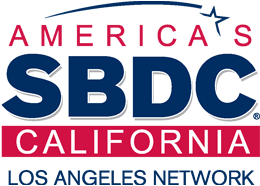October 20, 2011
Cash flow is often referred to as the lifeblood of a business. But too many small business owners know far too little about this crucial measure of a business’s vitality.
What is cash flow, and how can you keep your finger on its pulse?
Simply put, “Cash flow is the ebb and flow of money in and out of a business,” explains SBDC Business Advisor Bruce Sparks. “This differs from profitability in that many businesses get payment terms from their vendors or collect deposits from their customers that are not timed the same as the completion of business.”
What problems can arise if you don’t stay on top of your cash flow?
First, you’ll find yourself unable to pay creditors or employees on time. You might need to borrow money, which is costly and difficult. And if you are making payments late, your business credit rating will suffer, making it even harder to find financing and sending your business into a downward spiral.
 What’s the worst that can happen?
What’s the worst that can happen?
“Poor cash flow management can [ultimately] drive a profitable business into bankruptcy,” Sparks warns. He uses the example of a small company that gets the opportunity to take a large order from a customer that expects to pay 30 days after the products are shipped. “If the small company doesn’t make sure they have the cash to produce and ship the order and wait to get paid,” Sparks explains, “then their creditor could shut them down.”
How can good cash-flow management benefit your business?
“It enables the business owner to make key decisions regarding debt management or investments, including investments to expand the business,” says SBDC Business Advisor Nate Jemison. If you end up with a surplus of cash, adds Sparks, “[you] can project how long that surplus is likely to last and put the money to work earning interest for that period of time.”
How can you make sure your cash is flowing nicely?
Ideally, Jemison recommends daily review of your sales and expense receipt journal reports. At a minimum, monitor your checking account, accounts payable and accounts receivable weekly, and reconcile your records with your bank statements monthly. “[Also] keep careful track of projected sales and inventory needs,” advises Sparks. “Construct regular, updated projections and budgets, taking into account trends in the market, average collection times and availability of money from other sources.”
Are there tools to help you?
Software such as QuickBooks makes cash flow management easy, says Sparks. If your needs are more complex, you can have your accountant create custom spreadsheets. Remember, cash flows both ways, so keep your eye out for warning signs such as slow-paying customers and take steps to speed their payments. On the payables side, “take advantage of supplier discounts and pay creditors in advance of the due date, if possible, to reduce your finance costs,” says Jemison.
Once you’ve got a grip on cash flow, what long-term steps should you take?
Projecting cash flow at least quarterly will help you predict when you may need extra money to handle a slow period or a large project. Sparks recommends planning ahead by identifying alternative sources of capital, such as savings or lines of credit, that will keep your finance costs down. Last, but not least, if you’ve got excess cash flow, “invest it wisely,” says Jemison. Yes, if you manage cash flow right, deciding what to do with your excess cash could be the biggest business challenge you face. Wouldn’t that be nice?
Rieva Lesonsky is founder and President of GrowBiz Media, a media company that helps entrepreneurs start and grow their businesses. Before launching her business, she was Editorial Director of Entrepreneur Magazine. Follow Rieva at Twitter.com/Rieva, read her blog at SmallBizDaily.com, and visit her website SmallBizTrendCast.com to get the scoop on business trends and sign up for free TrendCast reports.





